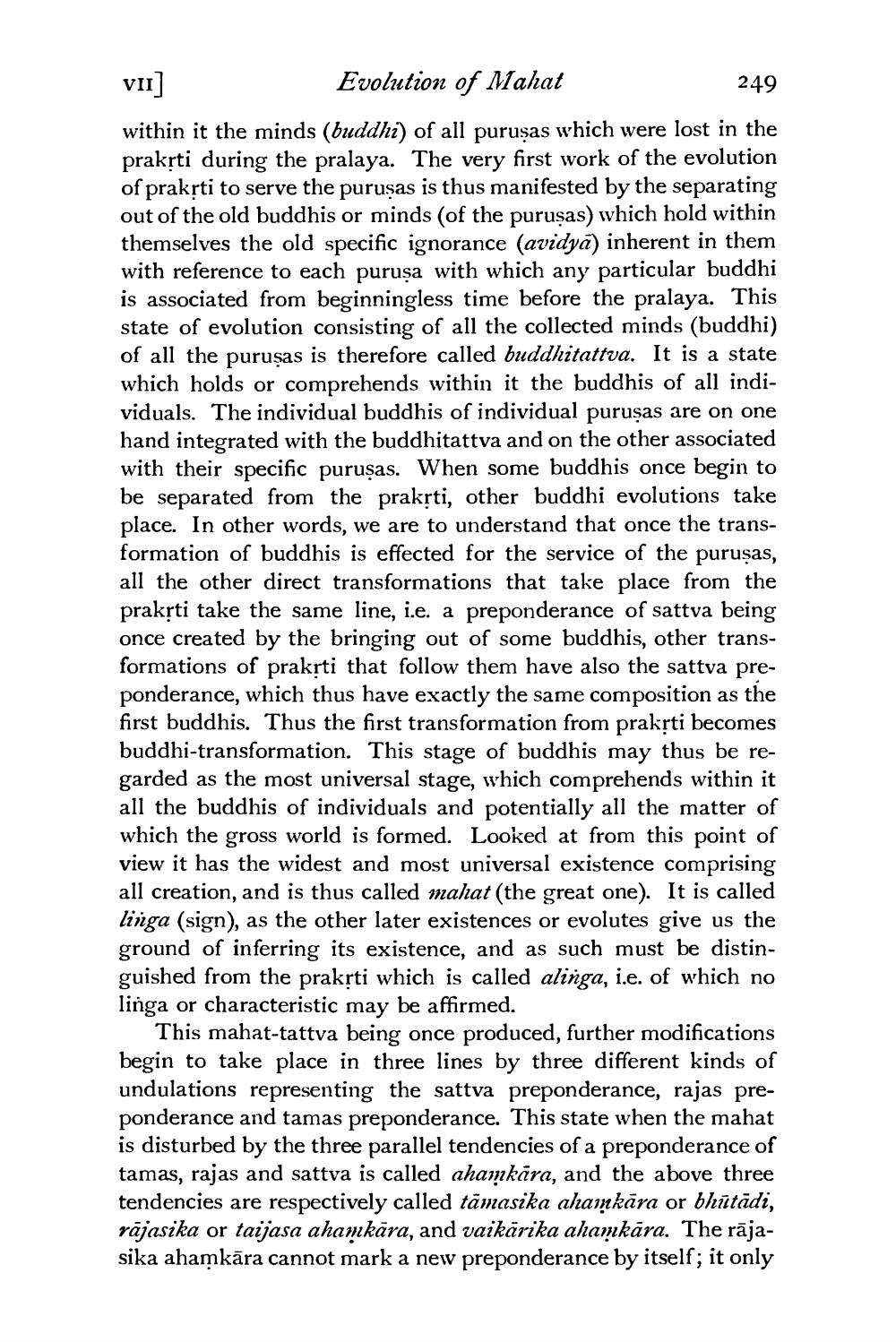________________
VII]
Evolution of Mahat
249 within it the minds (buddhi) of all puruşas which were lost in the prakrti during the pralaya. The very first work of the evolution of praksti to serve the purusas is thus manifested by the separating out of the old buddhis or minds (of the puruṣas) which hold within themselves the old specific ignorance (avidyā) inherent in them with reference to each purusa with which any particular buddhi is associated from beginningless time before the pralaya. This state of evolution consisting of all the collected minds (buddhi) of all the purusas is therefore called buddhitattva. It is a state which holds or comprehends within it the buddhis of all individuals. The individual buddhis of individual purusas are on one hand integrated with the buddhitattva and on the other associated with their specific purusas. When some buddhis once begin to be separated from the prakrti, other buddhi evolutions take place. In other words, we are to understand that once the transformation of buddhis is effected for the service of the purusas, all the other direct transformations that take place from the prakrti take the same line, i.e. a preponderance of sattva being once created by the bringing out of some buddhis, other transformations of prakrti that follow them have also the sattva preponderance, which thus have exactly the same composition as the first buddhis. Thus the first transformation from prakrti becomes buddhi-transformation. This stage of buddhis may thus be regarded as the most universal stage, which comprehends within it all the buddhis of individuals and potentially all the matter of which the gross world is formed. Looked at from this point of view it has the widest and most universal existence comprising all creation, and is thus called mahat (the great one). It is called linga (sign), as the other later existences or evolutes give us the ground of inferring its existence, and as such must be distinguished from the prakrti which is called alinga, i.e. of which no linga or characteristic may be affirmed.
This mahat-tattva being once produced, further modifications begin to take place in three lines by three different kinds of undulations representing the sattva preponderance, rajas preponderance and tamas preponderance. This state when the mahat is disturbed by the three parallel tendencies of a preponderance of tamas, rajas and sattva is called ahaiņkāra, and the above three tendencies are respectively called tămasika ahaiņkāra or bhītādi, rājasika or taijasa ahamkāra, and vaikārika ahamkāra. The rājasika ahamkāra cannot mark a new preponderance by itself; it only




